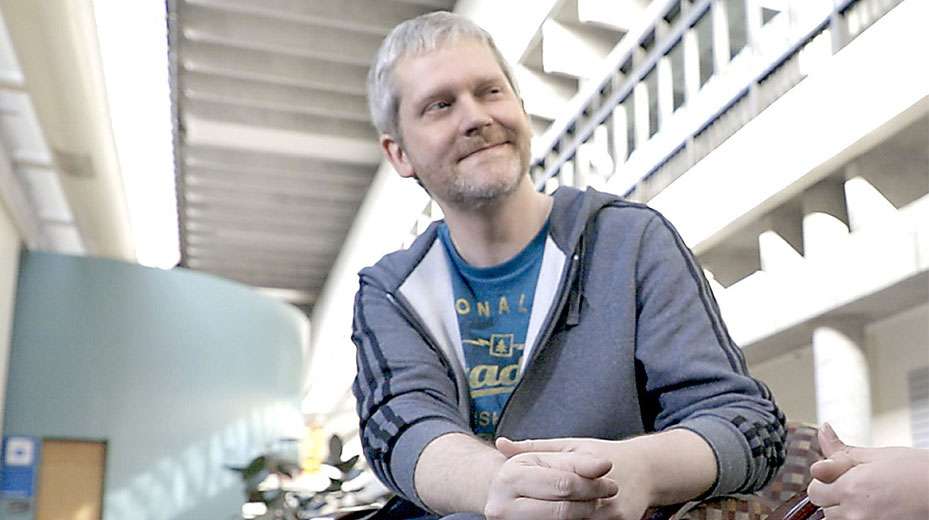Eye movement desensitization and reprocessing (EMDR) is a fairly new, nontraditional type of psychotherapy. It’s growing in popularity, particularly for treating post-traumatic stress disorder (PTSD). PTSD often occurs after experiences such as military combat, physical assault, rape, or car accidents.
Although research continues, EMDR remains controversial among some health care professionals.
At first glance, EMDR appears to approach psychological issues in an unusual way. It does not rely on talk therapy or medications. Instead, EMDR uses a patient’s own rapid, rhythmic eye movements. These eye movements dampen the power of emotionally charged memories of past traumatic events.
What Can You Expect From EMDR?
An EMDR treatment session can last up to 90 minutes. Your therapist will move their fingers back and forth in front of your face and ask you to follow these hand motions with your eyes. At the same time, the EMDR therapist will have you recall a disturbing event. This will include the emotions and body sensations that go along with it.
Gradually, the therapist will guide you to shift your thoughts to more pleasant ones. Some therapists use alternatives to finger movements, such as hand or toe tapping or musical tones.
People who use the technique argue that EMDR can weaken the effect of negative emotions. Before and after each EMDR treatment, your therapist will ask you to rate your level of distress. The hope is that your disturbing memories will become less disabling.
Although most research into EMDR has examined its use in people with PTSD, EMDR is sometimes used experimentally to treat many other psychological problems. They include:
- Panic attacks
- Eating disorders
- Addictions
- Anxiety, such as discomfort with public speaking or dental procedures
How Effective Is EMDR?
More than 20,000 practitioners have been trained to use EMDR since psychologist Francine Shapiro developed the technique in 1989. While walking through the woods one day, Shapiro happened to notice that her own negative emotions lessened as her eyes darted from side to side. Then, she found the same positive effect in patients.
EMDR appears to be a safe therapy, with no negative side effects. Still, despite its increasing use, mental health practitioners debate EMDR’s effectiveness. Critics note that most EMDR studies have involved only small numbers of participants. Other researchers, though, have shown the treatment’s effectiveness in published reports that consolidated data from several studies.
EMDR (Eye Movement Desensitization and Reprocessing) is a psychotherapy that enables people to heal from the symptoms and emotional distress that are the result of disturbing life experiences. Repeated studies show that by using EMDR therapy people can experience the benefits of psychotherapy that once took years to make a difference. It is widely assumed that severe emotional pain requires a long time to heal. EMDR therapy shows that the mind can in fact heal from psychological trauma much as the body recovers from physical trauma. When you cut your hand, your body works to close the wound. If a foreign object or repeated injury irritates the wound, it festers and causes pain. Once the block is removed, healing resumes. EMDR therapy demonstrates that a similar sequence of events occurs with mental processes. The brain’s information processing system naturally moves toward mental health. If the system is blocked or imbalanced by the impact of a disturbing event, the emotional wound festers and can cause intense suffering. Once the block is removed, healing resumes. Using the detailed protocols and procedures learned in EMDR therapy training sessions, clinicians help clients activate their natural healing processes.
More than 30 positive controlled outcome studies have been done on EMDR therapy. Some of the studies show that 84%-90% of single-trauma victims no longer have post-traumatic stress disorder after only three 90-minute sessions. Another study, funded by the HMO Kaiser Permanente, found that 100% of the single-trauma victims and 77% of multiple trauma victims no longer were diagnosed with PTSD after only six 50-minute sessions. In another study, 77% of combat veterans were free of PTSD in 12 sessions. There has been so much research on EMDR therapy that it is now recognized as an effective form of treatment for trauma and other disturbing experiences by organizations such as the American Psychiatric Association, the World Health Organization and the Department of Defense. Given the worldwide recognition as an effective treatment of trauma, you can easily see how EMDR therapy would be effective in treating the “everyday” memories that are the reason people have low self-esteem, feelings of powerlessness, and all the myriad problems that bring them in for therapy. Over 100,000 clinicians throughout the world use the therapy. Millions of people have been treated successfully over the past 33 years.
EMDR therapy is an eight-phase treatment. Eye movements (or other bilateral stimulation) are used during one part of the session. After the clinician has determined which memory to target first, he asks the client to hold different aspects of that event or thought in mind and to use his eyes to track the therapist’s hand as it moves back and forth across the client’s field of vision. As this happens, for reasons believed by a Harvard researcher to be connected with the biological mechanisms involved in Rapid Eye Movement (REM) sleep, internal associations arise and the clients begin to process the memory and disturbing feelings. In successful EMDR therapy, the meaning of painful events is transformed on an emotional level. For instance, a rape victim shifts from feeling horror and self-disgust to holding the firm belief that, “I survived it and I am strong.” Unlike talk therapy, the insights clients gain in EMDR therapy result not so much from clinician interpretation, but from the client’s own accelerated intellectual and emotional processes. The net effect is that clients conclude EMDR therapy feeling empowered by the very experiences that once debased them. Their wounds have not just closed, they have transformed. As a natural outcome of the EMDR therapeutic process, the clients’ thoughts, feelings and behavior are all robust indicators of emotional health and resolution—all without speaking in detail or doing homework used in other therapies.
The main treatments for post-traumatic stress disorder (PTSD) are psychological therapies and medicine.
Traumatic events can be very difficult to come to terms with, but confronting your feelings and seeking professional help is often the only way of effectively treating PTSD.
It’s possible for PTSD to be successfully treated many years after the traumatic event or events occurred, which means it’s never too late to seek help.
Assessment
Before having treatment for PTSD, a detailed assessment of your symptoms will be carried out to ensure treatment is tailored to your individual needs. This may be carried out by a GP or specialist.
You can see a GP to start on this process, or you can refer yourself for assessment to a psychological therapy service. You’re likely to be offered treatment if you’ve had symptoms of PTSD for more than 4 weeks or your symptoms are severe.
There are a number of mental health specialists you may see if you have PTSD, such as a psychological therapist, psychologist, community psychiatric nurse or psychiatrist.
Active monitoring
If you have mild symptoms of PTSD, or you’ve had symptoms for less than 4 weeks, an approach called active monitoring may be recommended.
Active monitoring involves carefully monitoring your symptoms to see whether they improve or get worse.
It’s sometimes recommended because 2 in every 3 people who develop problems after a traumatic experience get better within a few weeks without treatment.
If active monitoring is recommended, you should have a follow-up appointment within 1 month.
Psychological therapies
If you have PTSD that requires treatment, psychological therapies are usually recommended first.
A combination of a psychological therapy and medicine may be recommended if you have severe or persistent PTSD.
A GP can refer you to an NHS psychological therapies service (IAPT) or, in some cases, a specialist clinic.
You can also refer yourself directly to an NHS psychological therapies service (IAPT) without a referral from a GP.
Find an NHS psychological therapies service (IAPT)
There are 3 main types of psychological therapies used to treat people with PTSD.
Cognitive behavioural therapy (CBT)
Cognitive behavioural therapy (CBT) is a type of therapy that aims to help you manage problems by changing how you think and act.
Trauma-focused CBT uses a range of psychological techniques to help you come to terms with the traumatic event.
For example, your therapist may ask you to face your traumatic memories by describing aspects of your experience in detail.
During this process, your therapist helps you cope with any distress you feel while identifying any beliefs you have about the experience that may be unhelpful.
Your therapist can help you gain control of your fear and distress by reviewing with you any conclusions you have drawn about your experience (for example, feeling you’re to blame for what happened, or fear that it may happen again).
You may also be encouraged to gradually restart any activities you have avoided since your experience, such as driving a car if you had an accident.
You’ll usually have 8 to 12 weekly sessions of trauma-focused CBT, although fewer may be needed. Sessions usually last for around 60 to 90 minutes.
Find out more about CBT
Eye movement desensitisation and reprocessing (EMDR)
Eye movement desensitisation and reprocessing (EMDR) is a psychological treatment that’s been found to reduce the symptoms of PTSD.
It involves recalling the traumatic incident in detail while making eye movements, usually by following the movement of your therapist’s finger.
Other methods may include the therapist tapping their finger or playing sounds.
It’s not clear exactly how EMDR works, but it may help you change the negative way you think about a traumatic experience.
Support and advice
There are a number of charities that provide peer support and advice for PTSD.
For example:
- Combat Stress – a military charity specialising in helping ex-servicemen and women
- Rape Crisis – a UK charity providing a range of services for women and girls who have experienced abuse, domestic violence and sexual assault
- Victim Support – providing support and information to victims or witnesses of crime
- CRUSE – a UK charity providing support and information for people who have experienced bereavement
Medicine
The 2 medicines recommended to treat PTSD in adults are paroxetine and sertraline.
Paroxetine and sertraline are both a type of antidepressant known as selective serotonin reuptake inhibitors (SSRIs).
These medicines will only be used if:
- you choose not to have trauma-focused psychological treatment
- psychological treatment would not be effective because there’s an ongoing threat of further trauma (such as domestic violence)
- you have gained little or no benefit from a course of trauma-focused psychological treatment
- you have an underlying medical condition, such as severe depression, that significantly affects your ability to benefit from psychological treatment
Sometimes other antidepressants, such as venlafaxine, may be prescribed, but they are not licensed to treat PTSD.
These medicines are not usually prescribed for people younger than 18 unless recommended by a specialist.
If medicine for PTSD is effective, it’ll usually be continued for a minimum of 12 months before being gradually withdrawn over the course of 4 weeks or longer.
If a medicine is not effective at reducing your symptoms, your dosage may be increased.
Before prescribing a medicine, your doctor should inform you about possible side effects you may have while taking it, along with any possible withdrawal symptoms when the medicine is withdrawn.
For example, common side effects of paroxetine include feeling sick, blurred vision, constipation and diarrhoea.
Possible withdrawal symptoms associated with paroxetine include sleep disturbances, intense dreams, anxiety and irritability.
Withdrawal symptoms are less likely if the medicine is reduced slowly.
Children and young people
Trauma-focused CBT is usually recommended for children and young people with PTSD.
This normally involves a course of 6 to 12 sessions that have been adapted to suit the child’s age, circumstances and level of development.
Where appropriate, treatment includes consulting with and involving the child’s family.
Children who do not respond to trauma-focused CBT may be offered EMDR.
PTSD and driving
Post-traumatic stress disorder (PTSD) may affect your ability to drive safely. Ask your GP whether you should inform the Driver and Vehicle Licensing Agency (DVLA) about your condition.
Visit GOV.UK for more information on PTSD and driving




